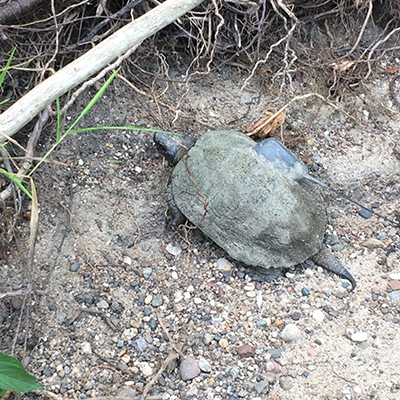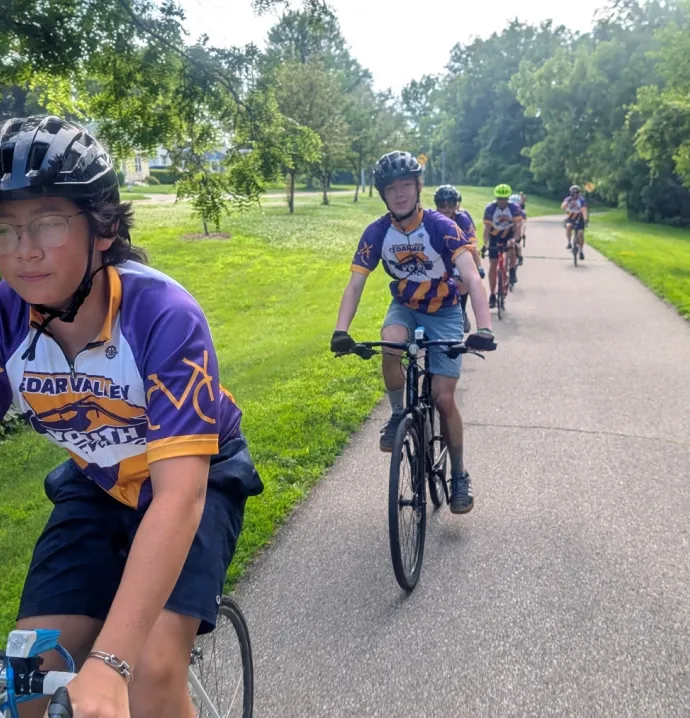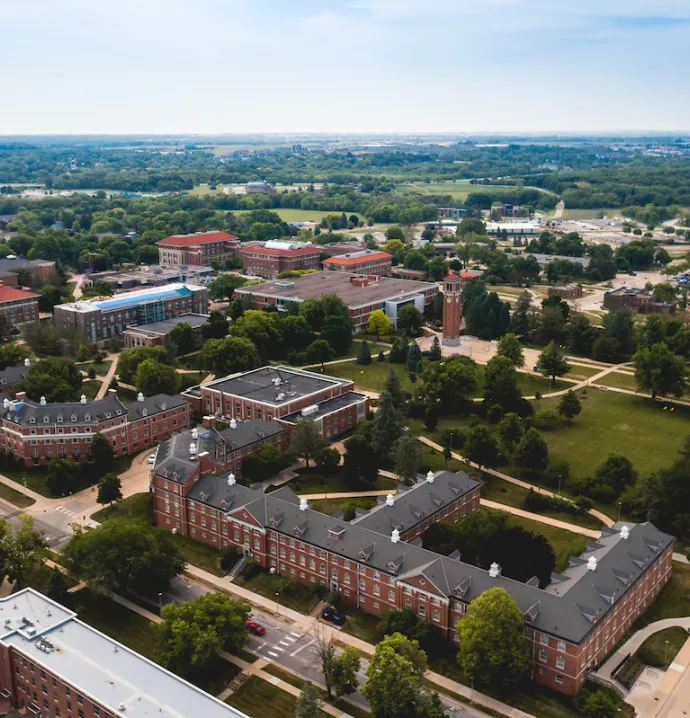Saving a species
Saving a species
As the ice gave way below his feet and plunged Jeff Tamplin into the frigid waters of the Cedar River, one thought flashed through his head: I’m going to die.
A split second later, Tamplin caught himself on the ice with his elbows. Crisis averted. Tamplin has found creeping across partially frozen ice to be a necessary part to checking wood turtles while they hibernate. It's all part of this University of Northern Iowa professor's 20-year quest to save the local turtle population from extinction.
This work is vitally important. Wood turtles are a state-listed endangered species in Iowa, and their nesting habitats and survival rates have been under pressure from human interference and climate change. That’s why the federal government has poured millions of dollars into research into the effects of this interference and how to mitigate its impacts.
This work, which won a $220,000 grant earlier this year from the U.S. Fish and Wildlife Service, which is part of almost $2 million awarded to Tamplin’s work, is part of the outsized role UNI plays in the conservation of wood turtles, both in the state and beyond. Tamplin is the top expert in Iowa on this type of work, and his work in Iowa may have implications for the protection of wood turtles on a national scale.
“Wood turtles are a dwindling species that are having trouble with human alteration of habitat and increased precipitation,” Tamplin said. “This has been a long-term project trying to assess their behavior across their range and what we can do to keep them from going locally extinct here.”
The grant started in 2014 as a partnership between four states - Iowa, Minnesota, Wisconsin, and Michigan. The most recent round Tamplin received was a portion of a larger $1 million grant awarded to the Minnesota Department of Natural Resources. That grant was also a portion of the overall funding from the U.S. Fish and Wildlife Services - a total of $7.4 million awarded to 17 projects across the nation focused on protecting species and their habitats.
“Tamplin is a key player in a multi-state wildlife recovery effort aimed at increasing survivorship of this endangered species. This work brings national recognition in the field of conservation to UNI,” said Theresa Spradling, head of the Department of Biology. “Tamplin’s research gives our students valuable experience in scientific practices that will serve them well when they move into professional fields.”
Wood turtles typically reside further north and east than Iowa, but a small segment of the population lives in the North Cedar River and the Shell Rock and West Fork of the Cedar River. Tamplin has studied the local population for 20 years, trekking out to the Cedar River in winter and summer, using radio tracking to collect data on population numbers, spawning locations, and hatchling survival rates. For the next three years, he will head across the border to Minnesota to study turtle populations there for the first time.
He will report his findings to the U.S. Fish and Wildlife Service and the Iowa and Minnesota DNRs, informing them of how many wood turtles were killed, what he thinks the cause of death was, and how the loss of life might be prevented. Oftentimes, the news is grim.
“Usually what I tell them is ‘oh, every single nest was wiped out by a flood this particular week,’” Tamplin said.
Wood turtles have highly specific nesting requirements - they need a sandy, gravelly beach, highly oxygenated water, and specific, colder temperatures during winter. As humans have fragmented and altered natural habitats, finding these conditions has become increasingly difficult, which is why the wood turtle is a state-listed endangered species and is on a petition to the U.S. Fish and Wildlife Services to become a federally listed endangered species
"Should the wood turtle be listed under the U.S. Endangered Species Act, it is possible that Dr. Tamplin’s data, collected in Iowa, could form the foundation for the designation of critical habitat throughout the range of the wood turtle within the United States,” said Karen Kinkead, wildlife diversity coordinator for the Iowa DNR. “To my knowledge, no other scientist has studied this species to the level of Dr. Tamplin."
This funding cycle, which will end in 2024, Tamplin will use radio transmitters to track 20 wood turtles, studying and assessing the continued destruction and interference in the wood turtles' nesting success that has caused a decrease in the number of juveniles hatched each year and poses an existential threat to the species.
“We call it a ghost population,” Tamplin said. “It's mostly older adults at or near the end of their lifespan. They reproduce almost every year, but almost none of their eggs and hatchlings ever make it to maturity.”
Other threats include an increased number of predators, mainly the result of the booming population of local raccoons, which can chew the head off of wood turtles. Wood turtles are also a popular target for poachers. Their intelligence makes them highly desirable pets. Wood turtles can be trained to navigate a maze and have a strong homing ability that allows them to return to specific feeding and nesting sites.
The grant-funded project will not only provide the U.S. Fish and Wildlife Service with data to determine if the species should be federally protected, but it will also install needed mitigation measures to protect the threatened spawning habitats of wood turtles. These include nesting and foraging habitat creation, restoration, and protection, installation of barriers to reduce road mortality, and studies to identify potential locations for new restoration efforts.
In the past, Tamplin has hired graduate students to assist with this work, but this grant cycle, he set aside $22,000 of the grant funding to hire undergraduate students to help with the research. It’s demanding work that Tamplin said takes a particular kind of person.
“It's tiring. We cover lots of ground walking out there with heavy equipment and huge boots, and you’re wading in and out of rivers. You're always wet, you're always either too hot or too cold or there are too many bugs or something,” Tamplin said. “So you need students who can handle that and deal with the bad days. And there are also great days out there where you’re just like, ‘oh, I'd almost pay somebody to do this. But instead, they’re paying me.”
It’s a field research experience into the world of what Tamplin refers to as “muddy-boot biology.”
“You’re actually out there wading in streams and rivers,” Tamplin said. “And you’re testing hypotheses based on your ideas and the data you collected.”
Many of Tamplin’s students are driven by a desire to care for animals. Several have gone on to become veterinarians, and others have earned Ph.Ds. All told, at least 28 biology undergraduates and five graduate students have worked on the project.
But the experience of Tamplin’s research goes beyond classrooms and careers – it offers a window into nature.
“Just about two weeks ago in the snow, we found a place where a coyote chased a turkey for probably 200 yards, and it looked like the turkey got away,” Tamplin said. “We're always learning something about being out in nature. And to me, it just inspires me.”
This love of nature extends into his research. Tamplin’s work is motivated by a deep respect for the biological success of the wood turtle and a moral obligation to rescue a species that is being driven to extinction by causes almost exclusively tied to human activity.
“This species has been here for at least 18 million years. It survived four glaciation periods, and it survived prior global warming periods,” Tamplin said. “And then, in a matter of 50 years, we are doing things that are causing their extinction. So for me, I care about other life forms, and I think we have an obligation to help them persist.”




